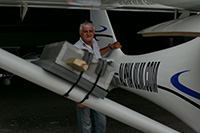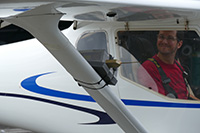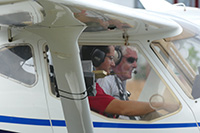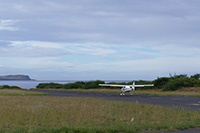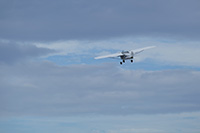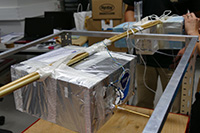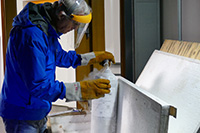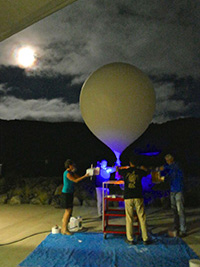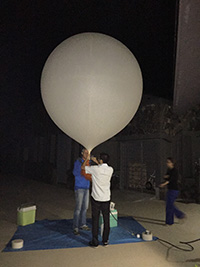AeroMarine
Where: La Réunion, Indian Ocean
When: March 2016
Among natural sources, sea spray emissions play a critical role in our understanding of climate. It has been shown recently that sea spray emission depends on sea surface temperature (SST) in addition to wind speed and waves. Climate models predict an SST increase of 2 to 4°C in the Tropics and Subtropics by 2100, with the largest increase expected in the Indian and Pacific Oceans. Sea spray emission would increase by 14 to 40%, resulting in a negative feedback in clear sky on a warming climate which is not taken into account in climate models due to biased emission parameterizations.
Recently, marine aerosols have also been highlighted as an important source of ice nuclei (IN) in pristine oceanic environments [Wilson et al., 2015]. Differences in tropical tropopause layer (TTL) cirrus properties and water vapor concentrations could exist for air masses with low and high aerosol loadings. However the lack of data from pristine environments prevents us from making firm conclusions on the possible influence of anthropogenic emissions on IN distribution in the TTL and heterogeneous cirrus cloud formation. Studies are mostly based on northern hemisphere cirrus measurements, while hemispheric differences in ice supersaturation, aerosol content and concentration could lead to different ice microphysics for the southern hemisphere TTL [Ovarlez et al., 2002].
Recent literature has shown that the Southern Indian Ocean is potentially a hot spot for sea spray emission due to strong trade winds and high sea surface temperature. Hence, measurements taken from La Réunion are relevant for several topics related to marine aerosols and pristine oceanic regions.
The POPS (Printed Optical Particle Spectrometer) instrument, developed at CSD by NOAA and CIRES (Cooperative Institute for Research in Environmental Sciences at the University of Colorado Boulder) researchers, deployed at La Réunion during a 2 week field campaign in March 2016. The European ACTRIS-2 Trans-National Access funded the AeroMarine project.
The goal of the AeroMarine project was to:
- Test the POPS instrument with a drone, a light plane, and a balloon launch
- Acquire datasets on marine aerosol distribution and atmospheric thermodynamic state to further our understanding on marine aerosols and marine boundary layer
- Estimate the exchange of aerosols between the MBL (marine boundary layer) and free troposphere
The AeroMarine project was also envisioned as an international collaborative effort between NOAA (USA) and OSU-Réunion and LACy laboratory (France). By bringing in expertise from NOAA, it will help design new strategies at Maïdo Observatory on innovative measurement techniques for future monitoring of atmospheric composition.


POPS total particle concentration indicates that the aerosol content in the TTL over La Réunion is low (~10 partices/cm3) and is dominated by aerosol sizes corresponding to the accumulation mode (particle sizes between 0.1 and 2.5µm, not shown). This is probably reasonable as inter-hemispheric mixing is weak and the TTL over the SH is cleaner than the NH.
